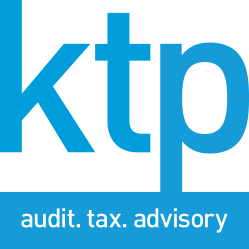Why Stock Take under Income Tax and GST? Part 2 of 2
eKTP 59
Conduct stock take for Tax Saving and meetregulation requirements.
HOW TO DO STOCKTAKING?
Plan Ahead
It is important that you have a full understanding of the resources and time required, so as to reduce the level of interruption to business operation. Most Company will be conducting stocktakes outside of business hours. As part of your planning procedures you should also ensure that the materials such as stock sheets, pen and calculators are ready for your staff members.
Organise Staff
Involve internal staff in stocktaking procedures as it will help them to gain understanding of the importance of stock management. When allocating teams for the stocktake management may appoint a supervisor to each section and ensure all staff fully understands how the stock is to be counted. For example, it may be advisable to count from top to bottom and from left to right of the stock room, to avoid count duplications. It is also good practice to clearly mark items that have been counted in count tags, so as to avoid duplication and to identify items which may have been missed in error.
Know what needs to be counted
Firstly, the management should identify all stock owned by your business and stock held. Stock held could invoiced to customers, but not yet dispatched and stock received but not yet recorded in your system should be isolated and excluded from the stock count. The location should be easily accessible and arranged in proper categories.
Staff should be aware of the requirement to identify slow moving, damaged or obsolete stock. It is important that these items are separately identified so they can be either valued at a discounted price or removed from the stock count completely.
Get value for your stocktake
It is important to review price lists to ensure you have the most up to date prices for the stocktake and that all recent price changes have been taken into account. Another aspect to be considered when valuing stock is to identify the lower of the cost of the item or the actual selling price of the item, as stock should be valued at the lower of both.
By stock has counted and price correctly valued, the management to review the results of the stocktake to identify where improvements in stock management can be made. By understanding your stock levels and stock requirements you can easily identify and monitor slow moving stock, profitable stock and possible theft which may be occurring within your business. Regular stocktakes will also assist you in streamlining your warehouse procedures and allow you to deal with stock issues in a more efficient and effective manner. Furthermore, if you conduct regular stocktakes throughout your financial year your staff will become more familiar with the procedures and stocktakes will be conducted in a more efficient manner.
Archive
- April 2025
- March 2025
- February 2025
- January 2025
- December 2024
- November 2024
- October 2024
- September 2024
- August 2024
- July 2024
- June 2024
- May 2024
- April 2024
- March 2024
- February 2024
- January 2024
- December 2023
- November 2023
- October 2023
- September 2023
- August 2023
- July 2023
- June 2023
- May 2023
- April 2023
- March 2023
- February 2023
- January 2023
- December 2022
- November 2022
- October 2022
- September 2022
- August 2022
- July 2022
- June 2022
- May 2022
- April 2022
- March 2022
- February 2022
- January 2022
- December 2021
- November 2021
- October 2021
- September 2021
- August 2021
- July 2021
- June 2021
- May 2021
- April 2021
- March 2021
- February 2021
- January 2021
- December 2020
- November 2020
- October 2020
- September 2020
- August 2020
- July 2020
- June 2020
- May 2020
- April 2020
- March 2020
- November 2019
- September 2019
- August 2019
- July 2019
- June 2019
- May 2019
- April 2019
- March 2019
- February 2019
- January 2019
- December 2018
- November 2018
- October 2018
- September 2018
- August 2018
- July 2018
- June 2018
- May 2018
- April 2018
- March 2018
- February 2018
- January 2018
- December 2017
- November 2017
- October 2017
- September 2017
- July 2017
- June 2017
- May 2017
- April 2017
- March 2017
- November 2016
- October 2016
- September 2016
- August 2016
- July 2016
- June 2016
- May 2016
- April 2016
- March 2016
- February 2016
- January 2016

